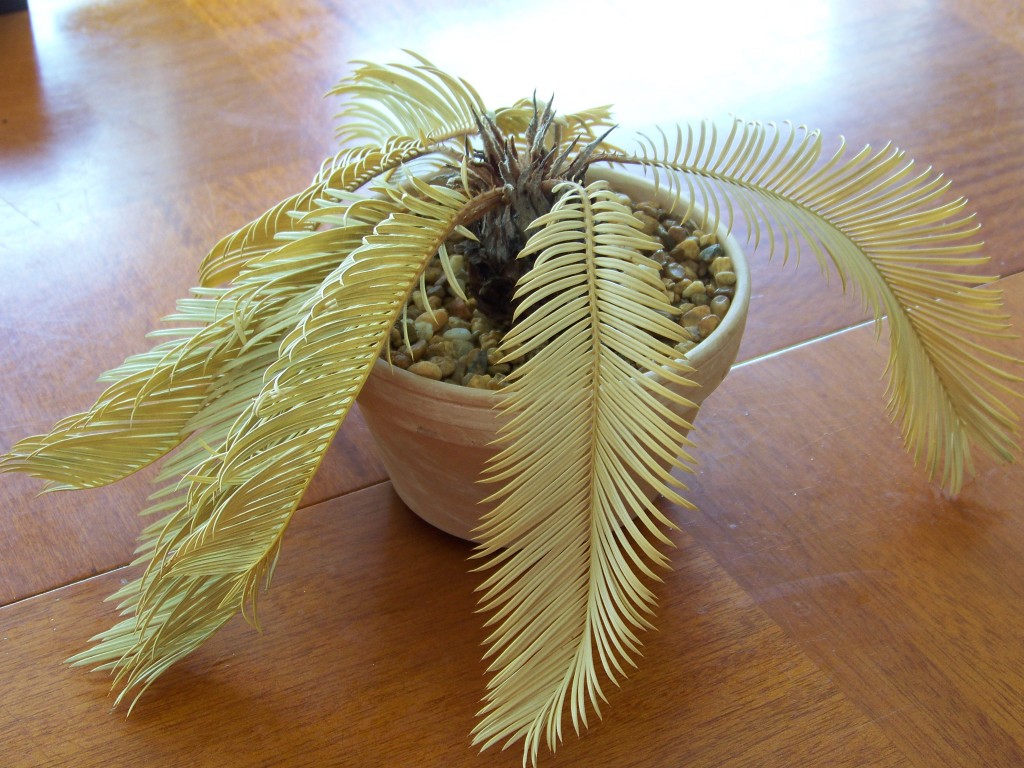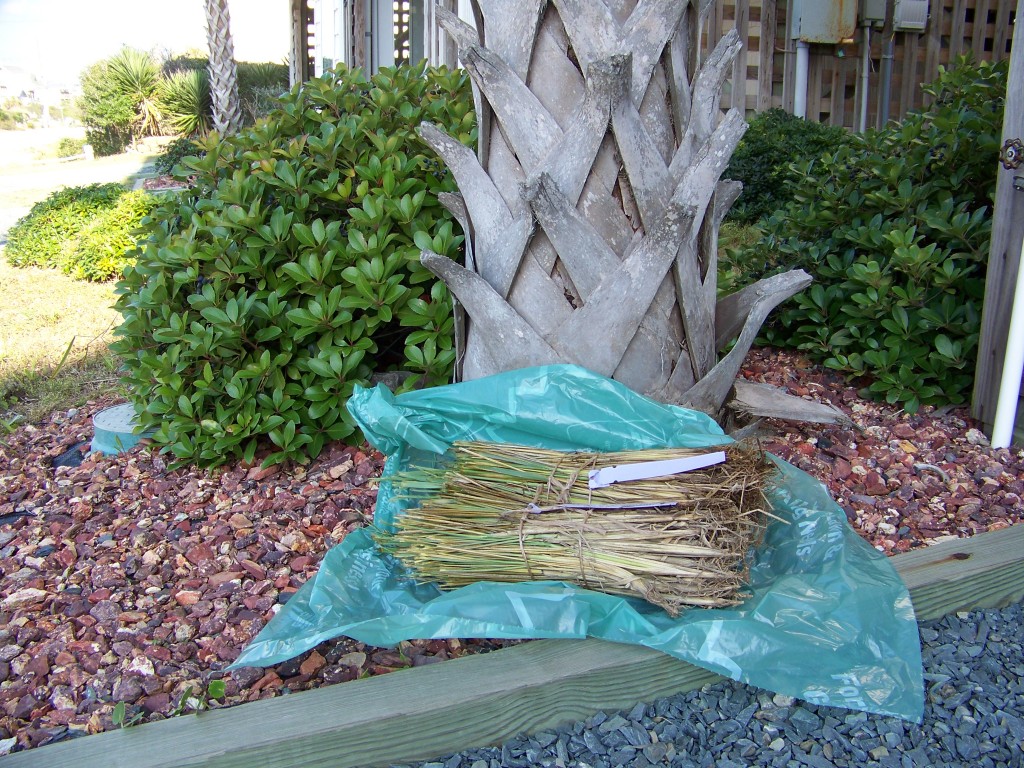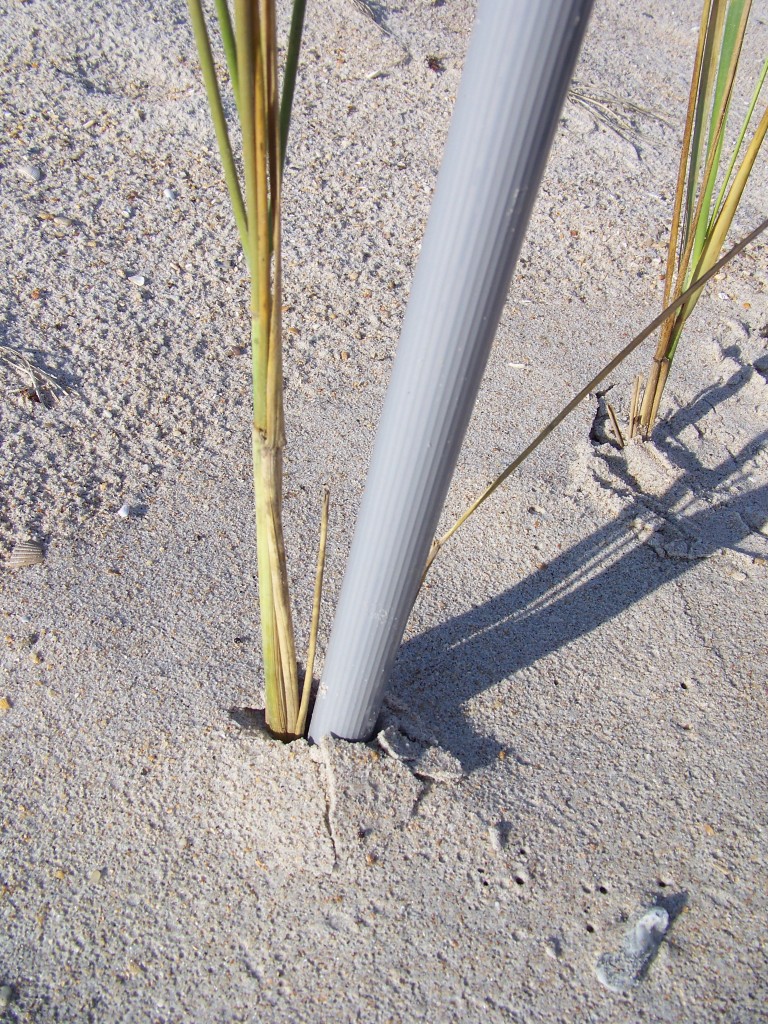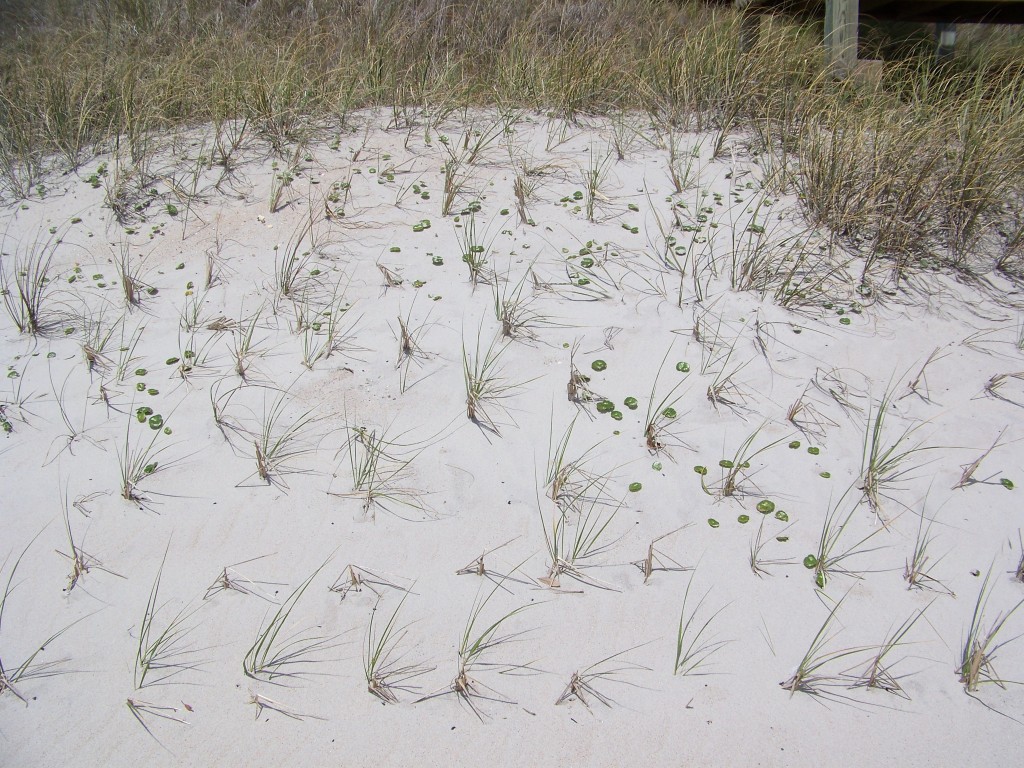My success rate for making anything green grow and last more than, oh, three months is at about 10%. There are probably many reasons for this. Stupidly, I tend to buy plants and then forget about them for several days. Therefore, when I remember them at last, my efforts are then focused more on reviving rather than thriving. Also, my watering patterns tend to be, well, sporadic. Finally, I really wish that I didn’t have to admit this, but if I’m going to be truthful, I must say that I think it’s possible that last fall was the first time I used fertilizer. Ever. I know. I’m highly embarrassed.
Last fall, for example, I purchased a small sago palm. I bought it for one reason only; on the tag, it very clearly said, “Wants Minimal Attention.†It looked beautiful when I bought it. And it did fine for about three months. It sat in the center of my kitchen table, so I actually remembered to water it too. Then we went away for a few days at Christmas, turning down the heat when we left. When we returned, it was drooping slightly. No problem, I thought, a little watering and either warmer natural temperatures or a little help from the thermostat should fix it in no time.
As you can see, another three plus months later, it was not meant to be. Oh, I’m guessing there may have been some simple fix, like repotting (too much work), or fertilizing (too messy) or a new owner (too embarrassing offering to give someone a mostly-dead plant). I want so much to buy another one and try again, but it just seems cruel to subject another plant to such low odds of survival.
Fortunately, I also had a positive experience with growing vegetation last fall, although it’s not been until recently that I’ve come to realize my success. I planted dune grass to protect my dune. Dune grass helps to hold the sand and hence the dune in place, which, besides looking nice, protects the house in storms and hurricanes.
I’ve planted dune grass before, but I’ve always done it in the late spring. In my sordid past of plants and gardens, this has been the easiest planting experience of all. Tools are helpful, but not necessary. Their watering needs are minimal, meaning they don’t totally die right away if you don’t water them much.
So, bolstered by my previous success, I decided to up my game in two ways. First, I decided to plant some dune grass in the fall as well. Second, I decided to use fertilizer, based on the recommendation of the guy at the nursery who seemed very knowledgeable and frankly rather earthy. I bought 200 pieces of dune grass and a bag of fertilizer, and brought them home to plant.
It is a delicate process to plant the grass, because you need to get on top of the dune to do it, but you also want to be careful not to push sand down to the base of the dune while you are up there planting. I’ve heard different recommendations about how deep to plant the grass, but I was aiming for about 10 inches deep, so I brought an old broom handle with me to help make my holes. Once the handle was in deep enough, I slipped a piece of dune grass in the hole while simultaneously removing the handle. This method seemed to work best for me.
Then, after the grass was all planted, I fertilized and watered the grass. Of course, the wind picked up and I ended up with fertilizer all over me, including up my nose. As aforementioned, I’d already survived bird poop in my ear by age 14, so why would I sweat a little fertilizer laced with animal feces up my nose now? It’s all good.
Despite the fertilizer incident, I was so pleased with my work that I went back to the nursery to buy 100 more pieces of dune grass. This time I was assisted by another man who, as I was paying, casually mentioned not to fertilize the grass until spring time.
What??? When I questioned him, he said, “I don’t know. That’s just what the brochure said that came with the dune grass when we got it in.â€
Great. Do I believe the earthy guy or the I-read-it-in-the-alleged-brochure guy? Well, I had already done the initial fertilization, so that obviously couldn’t be undone. So I planted the remaining 100 pieces and left the fertilization alone this time.
We ended up with the snowiest winter in like, ever, so I was holding my breath waiting to see what would become of my labors come spring.
Guess what? Most of the dune grass not only survived but thrived! I have a feeling, based on no data whatsoever, that the grass may have been a little thicker by now had the winter been milder. But it’s growing! I’m so excited because a small amount of labor and money is paying off. In a month or so, I’ll probably look at adding some bitter panicum, another type of dune grass, which tends to thicken up nicely during the summer.
Maybe I should try another sago palm after all. Maybe I will try my hand at fertilizing and repotting. After all, what’s a little animal feces up the nose compared to a thriving, tropical plant in my kitchen?



